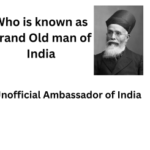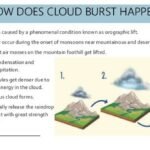India decides to ratify Kigali Amendment to Montreal Protocol

India on Wednesday decided to ratify a key amendment to the 1989 ozone-saving Montreal Protocol negotiated five years ago. The Kigali Amendment, named after the Rwadan capital where it was negotiated, enables the phase-out of hydroflurocarbons, a set of chemicals notorious for their capacity to warm the planet.
The 2016 amendment was seen as one of the most important breakthroughs in the global efforts to fight climate change, because the HFCs, a set of 19 gases used extensively in the air-conditioning and refrigerant industry, are known to be hundreds, even thousands, of times more potent than carbon dioxide in their ability to cause global warming.
Hydrochlorofluorocarbons (HCFCs), greenhouse gases that damage the earth’s ozone layer.
LEARNING FROM HOME/ WITHOUT CLASSES/ BASICS
India being a Party to the Montreal Protocol and its amendments needs to phase-out Ozone Depleting Substances (ODS) including HCFC as per the reduction schedule specified in the Protocol.
The Montreal Protocol seeks to cut the production and consumption of ozone depleting substances in order to protect the earth’s fragile ozone layer. It also aims at phase out HCFCs by 2030. Under this Protocol the first concrete step to save the Ozone layer was taken by immediately agreeing to completely phase out chlorofluorocarbons (CFC), Halons, Carbon tetrachloride (CTC) and Methyl chloroform (MCF) as per a given schedule
OZONE
Ozone is a form of oxygen. Oxygen occurs in three different forms in the atmosphere; as oxygen atoms (O), as oxygen molecules (O2) and as Ozone (O3).
Ozone’s unique physical properties allow the ozone layer to act as our planet’s sunscreen, providing an invisible filter to help protect all life forms from the sun’s damaging UV (ultraviolet)rays. Most incoming UV radiation is absorbed by ozone and prevented from reaching the Earth’s surface. Without the protective effect of ozone, life on Earth would not have evolved the way it has.
ULTRAVIOLET RADIATION:
Ultraviolet radiation is the one form of radiant energy coming out from the sun. The sun emits a range of energy known as the electromagnetic spectrum. The various forms of energy, or radiation, are classified according to wavelength. The shorter the wave-length, the more energetic the radiation. In order of decreasing energy, the principal forms of radiation are gamma rays, x-rays, UV (ultraviolet radiation), visible light, infrared radiation, microwaves, and radio waves. Ultraviolet, which is invisible, is so named because it occurs next to violet in the visible light spectrum. The three categories of UV radiation are :
UV-A between 320 and 400 nm; UV-B between 280 and 320 nm; UV-C between 200 and 280 nm
Of these UV-B and C being highly energetic and are dangerous to life on earth. UV-A being less energetic is not dangerous. Fortunately, UV-C is absorbed strongly by oxygen and also by ozone in the upper atmosphere. UV-B is also absorbed by ozone layer in the Stratosphere and only 2-3% of it reaches the earth’s surface. The ozone Layer, therefore, is highly beneficial to plant and animal life on earth in filtering out the dangerous part of sun’s radiation and allowing only the beneficial part to reach earth. Any disturbance or depletion of this layer would result in an increase UV-B and UV-C radiation reaching the earth’s surface leading to dangerous consequences. Increased penetration of solar UV-B radiation is likely to have profound impact on human health with potential risks of eye diseases, skin cancer and infectious diseases.
OZONE DEPLETION
Ozone depletion occurs when the natural balance between the production and destruction of stratospheric ozone is tipped in favour of destruction.Although natural phenomenon can cause temporary ozone loss, chlorine and bromine released from synthetic compounds is now accepted as the main cause of a net loss of stratospheric ozone in many parts of the world since 1980.There is strong evidence that global ozone depletion is occuring. The evidence is in the observations of the Antratic ozone “hole”and atmospheric records indicating seasonal declines in global ozone levels.
The UN General Assembly adopted a resolution which proclaims 16th September as the International Day for the Preservation of the Ozone Layer, to commemorate the signing of the Montreal Protocol on the Substances that Deplete the Ozone Layer which was signed on 16th September, 1987. India become party to the Montreal Protocol in June 1992.





0 Comments